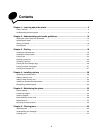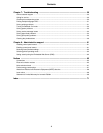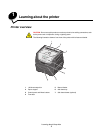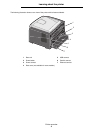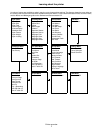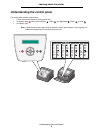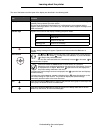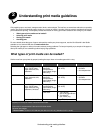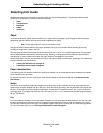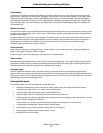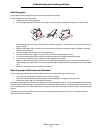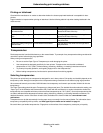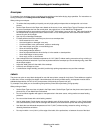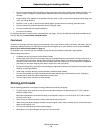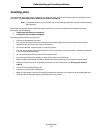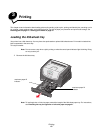
Selecting print media
11
Understanding print media guidelines
Selecting print media
Selecting the appropriate print media for the printer helps you avoid printing problems. The following sections contain
guidelines for choosing the correct print media for the printer:
•Paper
• Transparencies
• Envelopes
•Labels
• Card stock
Paper
To ensure the best print quality and feed reliability, use 75 g/m
2
(20 lb) xerographic, grain long paper. Business papers
designed for general business use may also provide acceptable print quality.
Note: Certain paper types will not print at maximum speed.
Always print several samples before buying large quantities of any type of print media. When choosing print media,
consider the weight, fiber content, and color.
The laser printing process heats paper to high temperatures of 210°C (410°F) for non-MICR applications. Use only paper
able to withstand these temperatures without discoloring, bleeding, or releasing hazardous emissions. Check with the
manufacturer or vendor to determine whether the paper chosen is acceptable for laser printers.
When loading paper, note the recommended print side on the paper package, and load paper accordingly. For detailed tray
loading instructions, see the following:
• Loading the 250-sheet tray on page 18
• Loading the manual feeder on page 23
Paper characteristics
The following paper characteristics affect print quality and reliability. It is recommended that these guidelines are followed
when evaluating new paper stock.
For detailed information, see the Card Stock & Label Guide available on the Lexmark Web site at www.lexmark.com/
publications.
Weight
The printer can automatically feed paper weights from 60 to 90 g/m
2
(16 to 24 lb bond) grain long in the integrated and
optional trays and paper weights from 60 to 163 g/m
2
(16 to 43 lb bond) grain long in the manual feeder. Paper lighter than
60 g/m
2
(16 lb) might not be stiff enough to feed properly, causing jams. For best performance, use 75 g/m
2
(20 lb bond)
grain long paper. To use paper narrower than 182 x 257 mm (7.2 x 10.1 in.), it is recommended that the weight be equal to
90 g/m
2
(24 lb bond).
Curl
Curl is the tendency of media to curve at its edges. Excessive curl can cause paper feeding problems. Curl can occur after
the paper passes through the printer, where it is exposed to high temperatures. Storing paper unwrapped in hot, humid,
cold, and dry conditions, even in the trays, can contribute to paper curling prior to printing and can cause feeding problems.
For more information about curl, see Turning on Reduced Curl mode on page 52.



